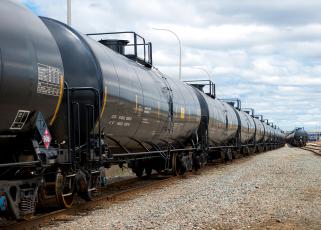OK, all you anti-pipeline activists, it’s time for a pop quiz: Can you identify on the map below where the proposed Bayou Bridge pipeline will be built?

How about if we narrow it down to a map of just the Atchafalaya Basin? Now can you identify where the Bayou Bridge pipeline you oppose will be built?
 It may be a little difficult to identify the exact location, what with the hundreds of other existing pipelines that are safely carrying oil and natural gas throughout the region (and which directly employ more than 64,000 people in Louisiana). All of which makes us wonder what the big fuss over the Bayou Bridge pipeline is all about. To hear the anti-pipeline activists tell it, the Bayou Bridge pipeline must be stopped simply because “it would be the tail end of the controversial Dakota Access route.” You heard it right. Out-of-state activists are protesting the Bayou Bridge pipeline because the domestically produced, light, sweet crude oil it will carry will have passed through the Dakota Access pipeline hundreds of miles to the north. In fact, these activists are so incensed about this link to the Dakota Access pipeline that at a recent permit hearing they warned, “the battle to stop the pipeline could turn the Atchafalaya Basin into the next Standing Rock.” One of the activists, a Californian who protested at Standing Rock, boasted that she “was instrumental in contributing to the more than $22 million in Dakota Access pipeline security costs borne by North Dakota taxpayers” because she mobilized hundreds of students to come to Standing Rock. “And that is in a place that has blizzards,” she said. “I image we could easily rack you up twice that [tax bill] in this comparable paradise, if you so choose.” Simply because the crude oil will have passed through the Dakota Access pipeline. The United States has the largest network of energy pipelines in the world, with more than 2.4 million miles of pipe. So what is it about the Dakota Access pipeline that has so incensed the protesters at Standing Rock? According to David Archambault, Chairman of the Standing Rock Sioux Tribe and organizer of the DAPL protests, “This is high profile because it’s simple: ‘Standing Rock,’ ‘Water is life.’ Taglines. It’s easy.” But it may also have something to do with the fact that very powerful activist groups behind these organized protests have their own agendas. For example, TIME magazine recently reported that, according to a new Sierra Club report, “thousands of miles of pipelines represent the next frontier in environmental activism focused on halting fossil fuel development.” In fact, in a recent blog post entitled “The Big Pipeline Fight Comes to Louisiana,” the Sierra Club strongly encouraged protestors to “attend and voice your opinion at the public hearing.” And what is behind Sierra Club’s relatively new disdain for pipelines? It’s quite possibly linked to the $100 million in grants that were doled out to the Sierra Club and four other activist groups in 2010 and 2011 by the Sea Change Foundation (the most recent data available), which gets its largess from “a Bermuda-based shell corporation with direct ties to Putin and Russian oil interests.” According to a U.S. intelligence report, the Russian government is concerned “about the impact of fracking and U.S. natural gas production on the global energy market,” and they are going to great lengths to disrupt our nation’s natural gas production.
It may be a little difficult to identify the exact location, what with the hundreds of other existing pipelines that are safely carrying oil and natural gas throughout the region (and which directly employ more than 64,000 people in Louisiana). All of which makes us wonder what the big fuss over the Bayou Bridge pipeline is all about. To hear the anti-pipeline activists tell it, the Bayou Bridge pipeline must be stopped simply because “it would be the tail end of the controversial Dakota Access route.” You heard it right. Out-of-state activists are protesting the Bayou Bridge pipeline because the domestically produced, light, sweet crude oil it will carry will have passed through the Dakota Access pipeline hundreds of miles to the north. In fact, these activists are so incensed about this link to the Dakota Access pipeline that at a recent permit hearing they warned, “the battle to stop the pipeline could turn the Atchafalaya Basin into the next Standing Rock.” One of the activists, a Californian who protested at Standing Rock, boasted that she “was instrumental in contributing to the more than $22 million in Dakota Access pipeline security costs borne by North Dakota taxpayers” because she mobilized hundreds of students to come to Standing Rock. “And that is in a place that has blizzards,” she said. “I image we could easily rack you up twice that [tax bill] in this comparable paradise, if you so choose.” Simply because the crude oil will have passed through the Dakota Access pipeline. The United States has the largest network of energy pipelines in the world, with more than 2.4 million miles of pipe. So what is it about the Dakota Access pipeline that has so incensed the protesters at Standing Rock? According to David Archambault, Chairman of the Standing Rock Sioux Tribe and organizer of the DAPL protests, “This is high profile because it’s simple: ‘Standing Rock,’ ‘Water is life.’ Taglines. It’s easy.” But it may also have something to do with the fact that very powerful activist groups behind these organized protests have their own agendas. For example, TIME magazine recently reported that, according to a new Sierra Club report, “thousands of miles of pipelines represent the next frontier in environmental activism focused on halting fossil fuel development.” In fact, in a recent blog post entitled “The Big Pipeline Fight Comes to Louisiana,” the Sierra Club strongly encouraged protestors to “attend and voice your opinion at the public hearing.” And what is behind Sierra Club’s relatively new disdain for pipelines? It’s quite possibly linked to the $100 million in grants that were doled out to the Sierra Club and four other activist groups in 2010 and 2011 by the Sea Change Foundation (the most recent data available), which gets its largess from “a Bermuda-based shell corporation with direct ties to Putin and Russian oil interests.” According to a U.S. intelligence report, the Russian government is concerned “about the impact of fracking and U.S. natural gas production on the global energy market,” and they are going to great lengths to disrupt our nation’s natural gas production.
Regardless of the reason, it’s obvious that whether we’re talking about environmental safety, energy security, economic benefits, or just plain common sense, these anti-pipeline activists simply don’t make the grade.


